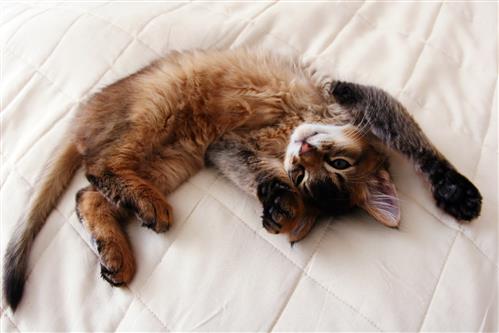Why You Should Never Get Your Cat Declawed
Scratching is a form of exercise for cats, and it also helps keep their claws maintained. Though scratching is perfectly normal behavior, some cat owners become frustrated by pets who claw and scratch furniture and carpets. As a quick fix, many owners have their cats declawed by a veterinarian. Once a common procedure, these days declawing is widely known as a dangerous and painful practice that can have long-term effects on the health of your pet.
Declawing Defined
Many believe that declawing is a simple surgery that can be compared to trimming a human’s fingernails. The actual process, however, involves amputation of the last bone on each toe. To compare this to the human body, declawing would be like cutting off each finger at the last knuckle bone. The operation is understandably painful, and often provides little to no benefit for the cat or his owners.
The Process
Declawing requires anesthesia and, therefore, is considered a major form of surgery. After the procedure, medical glue is used to close the wounds. Layers of bandages are then applied to help heal, and frequent changing means additional discomfort for your cat. Once your pet is allowed home, symptoms of pain may also be present, such as limping, swelling, and behavioral changes. The healing process may cause repeat trips to the vet, as well, which not only takes a toll on the animal, but can be expensive for his owner, too.
Why It’s Dangerous
Cats have claws for a reason, and removing them can negatively impact your pet’s quality of life:
- Scratching is used for exercise and stretching. Declawing changes the way the cat’s foot hits the ground, and can cause pain during simple tasks like running or walking.
- Since the structure of each foot changes after declawing, many cats have difficulty keeping their balance after the surgery.
- Cats use their claws for protection from predators. Some cats turn to biting to counteract feelings of insecurity after being declawed.
Alternatives
These days, there are many solutions for providing a claw-friendly home for cats. Shop your local pet store for scratching posts or toys to keep your pet away from furniture and fabrics. If the scratching is severe, your cat may ignore a single scratching post and go to a favorite couch instead, so you might want to buy a few posts. Place several around the home in areas where the cat typically scratches. To get your cat accustomed to using the new toy, try using catnip or even mimicking the scratching motion yourself.
When training your cat to use the new devices, you may want to try deterrents as well, to prevent further damage to your furniture and carpets. Try using aluminum foil or an inflated balloon to prohibit the cat from returning to problem areas. Also, during the learning process, make sure your cat’s nails are trimmed regularly so they do less damage.
For more tips about cat ownership, read the Australia Pet Doors blog for advice. We also use this space to share information about our quality cat doors. For more info about our products, please call 0414 922 751.

